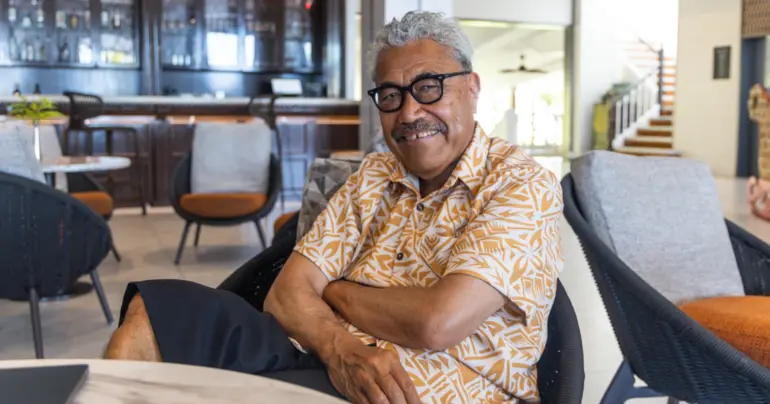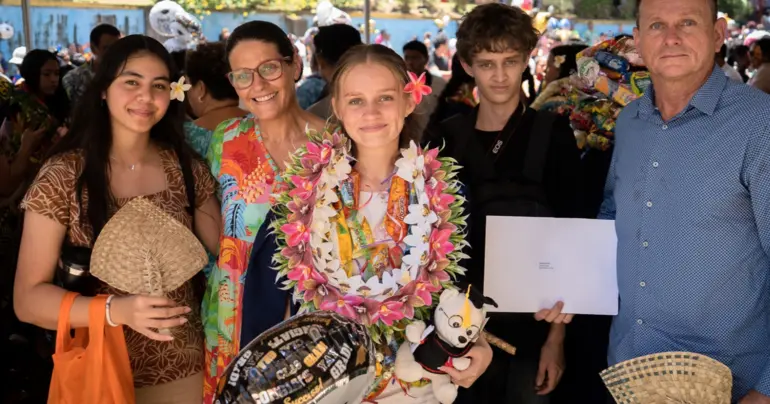Experts eye Apolima for rat eradication project
 By Fuimaono Lumepa Hald
•
28 August 2022, 11:00AM
By Fuimaono Lumepa Hald
•
28 August 2022, 11:00AM
Government officials and invasive species experts recently held discussions with Apolima residents to consider the establishment of a rat eradication project on the island.
Representatives from the Ministry of Natural Resources and Environment, Secretariat of the Pacific Regional Environmental Program (S.P.R.E.P.) and Pacific Regional Invasive Species Management Support Service met with Apolima residents from last Thursday to Saturday to discuss the removal of invasive species.
Studies done in other parts of the Pacific have shown that the presence of invasive species on islands are detrimental to the forest as well as the coastal areas and marine life.
According to the Assistant Chief Executive Officer with the M.N.R.E. Seumaloisalafai Afele Faiilagi, Apolima Island could provide a model for rat eradication efforts across the Pacific region.
“Apolima Island could become a model for eradicating rats on inhabited islands if it becomes rat-free, and that could be big news for Samoa and a success story in the Pacific,” Seumaloisalafai said.
“However, we are still a long way away from that.”
During their talanoa (discussion) sessions with the Apolima Island residents, they concluded that the rats appeared to be the main invasive species of interest on the island, confirming the findings of surveys done by the team.
The Apolima village representative and mayor, Leala Solo confirmed the rat infestation problems they’ve had on the island.
“Rats have been a problem on this island for so many years now and we thank the Government for considering our small, isolated island to be part of this project,” said Mr. Solo.
While there have been a number of successful rat eradication projects on uninhabited islands across the Pacific, efforts are now underway to replicate these successes on smaller inhabited offshore islands like Apolima.
David Moverley, who is the S.P.R.E.P. Invasive Species Advisor and was part of the Government team that visited Apolima Island last week, told the Samoa Observer that recent research has shown that eradicating rats can help to restore the natural resilience of island ecosystems to the increasing impacts of climate change.
He said they visited Apolima Island for two reasons: consultation for invasive species eradication consent from the village and to discuss the research on Samoa by a University of Newcastle PhD student William Young, which will then be taken on to Tonga and Niue.
Mr. Moverley says the success of rat eradication efforts on inhabited islands like Apolima will depend on the engagement, awareness and the support of the local communities.
“Recent research in Fiji and the Indian Ocean shows that eradicating rats can help save threatened coral reefs by helping to restore seabird populations,” he said.
“The guano from seabirds increases the levels of nutrients or nitrogen which increases the health of the reefs and their resilience to impacts such as coral bleaching and cyclones.
"These studies showed that the number of fish on coral reefs next to an island of seabirds was 50 per cent higher than the islands with rats.
“We already know that rats cause a multitude of problems for the Pacific islands. They eat turtle hatchlings, bird eggs and young chicks, often driving the birds towards extinction along with insects, lizards, and the seeds of native plants, all of which reduce ecosystem resilience.
“Rats also eat crops, reducing food security and affecting human health through the spread of disease.”
Travelling on a boat from Manono Island to Apolima, the PhD student Mr Young told this newspaper that they didn't have time to go into the forests and look around Apolima, nonetheless the talanoa sessions were long and in depth.
"Though we didn't have enough time to go into the forests and look around on Apolima, as the household surveys were in depth and long talanoa (talking) sessions, it was a great opportunity to learn of stories about feral goats that once populated the island from some elders, but now they are not there anymore. It's now a lot of feral pigs,” Mr Young said in an interview.
“Though they are an invasive species in itself, they are still considered to have a special value to the people. These during the times of fa'alavelave, or being sold to get money. "Rats, rats, rats are most definitely a problem because they spread diseases and damage a lot of the root crops on farms at Apolima as many community members pointed out in our household talanoa sessions.
"Some villagers identified crown of thorns as an issue as well and some invasive seaweeds for the marine environment.”
Mr. Young says that while we already know that invasive predators and weeds are reducing the resilience of ecosystems and communities, more research is needed to understand how Pacific communities perceive the relationships between invasive species and the impacts of climate change.
He added that the social survey had been designed to engage various groups such as women, men, youth and those living with disabilities and marginalised groups present in local Pacific Island communities to try and ensure a more holistic and inclusive approach to managing invasive species.
"Climate change aids invasive species widespread," he said."The project was well received and accepted by the elders, we interviewed all the families on the island.
"The eldest man of 75 years was very grateful that we were there to talk about such important things that relate to their daily lives.”
The consultation and social survey work on Apolima is being supported by NZDOC through the New Zealand Ministry of Foreign Affairs and Trade (MFAT) funded project "Managing Invasive Species for Climate Change Adaptation in the Pacific.”
 By Fuimaono Lumepa Hald
•
28 August 2022, 11:00AM
By Fuimaono Lumepa Hald
•
28 August 2022, 11:00AM











